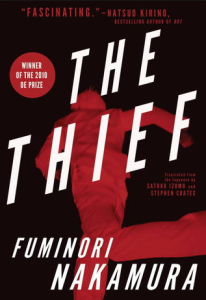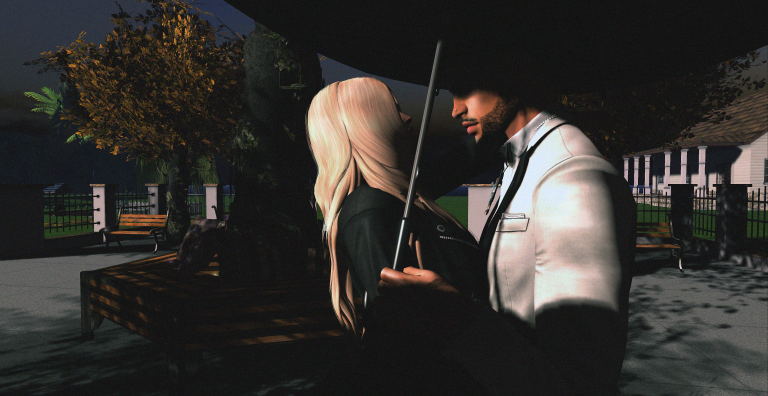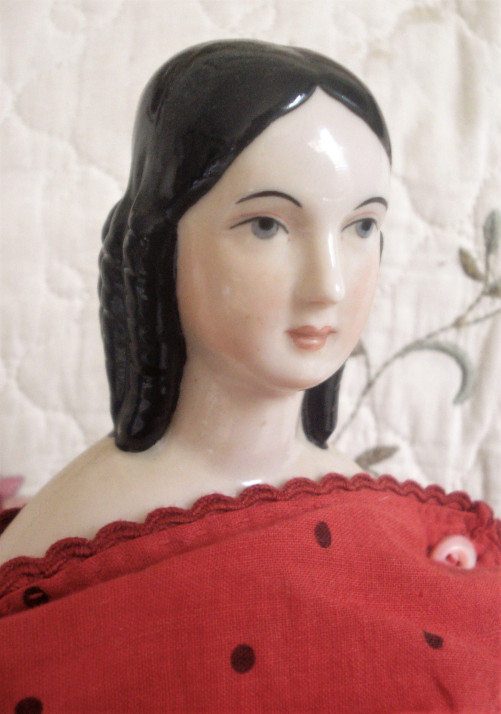
A reproduction Lydia china doll with well done face painting
Antique dolls are an art form. It is easy to see the art in the beautiful French bisque dolls of Bru, Steiner, and Jumeau, yet the less complex porcelain china dolls exhibit their artistry in the design of their face and shoulder mold, in the purity of the porcelain from which they are made, and in the beauty of their hairstyles and face painting. As one who collects and studies antique dolls, I often come across reproductions of the antique dolls in my searches. The durability of the one piece porcelain shoulder-heads renders them quite attractive for making new molds from the antique heads.
In all fairness though, molds, or copies, were being made of the old doll heads when they were still contemporary. Old papier mache heads have been found that are copies of German china dolls, and not all have a known maker. Martha Chase modeled her cloth dolls after French or German bisque dolls of the time, possibly using a bisque doll as a mold for her oil painted dolls. Even the Schoenhut “Miss Dolly” was modeled after a German doll owned by a child in the company’s family.

This Schoenhut wooden Miss Dolly doll in my collection dates to about 1915.
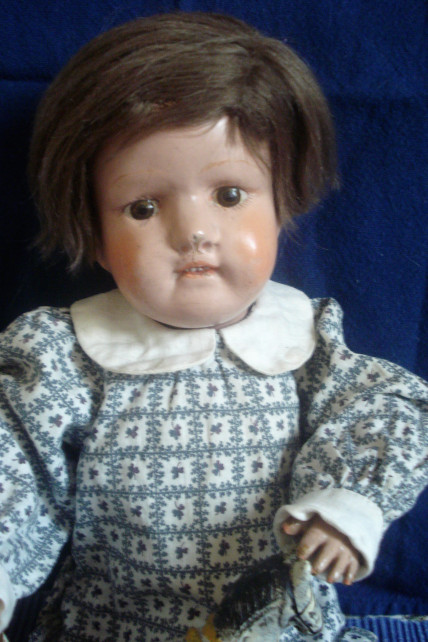
Schoenhut, an American manufacturer, found it profitable to add the Dolly Face doll to their line of character dolls at a time when dolls could no longer be imported from Germany during WWI.
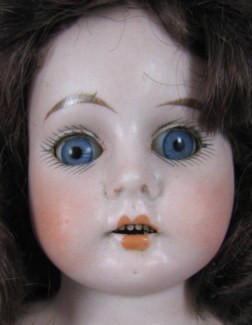
Here is an antique German bisque dolly face by Heubach. The Schoenhut doll above is quite similar with fat cheeks and pretty, but non-descript, features.
Many antique china dolls (as well as other antique dolls) are so rare now that a well executed reproduction can be a blessing for collectors like me who may never see one of these older revered dolls, much less ever expect to own one. For this reason, a few artistic reproduction dolls, as well as a reissue doll, have gained entry with respectable status into my collection of antique dolls.
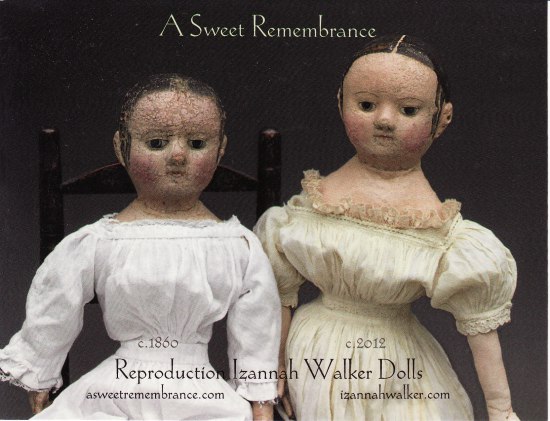
I have already introduced you to my reproduction Izannah Walker doll, Miss Ruby. She is a faithful and artistic rendering of an antique doll, made by Paula Walton. She is very close in her production to an antique Izannah Walker doll, and very likely as close as I can come to owning an example of this highly sought after and extremely expensive example of American folk art at its’ best.
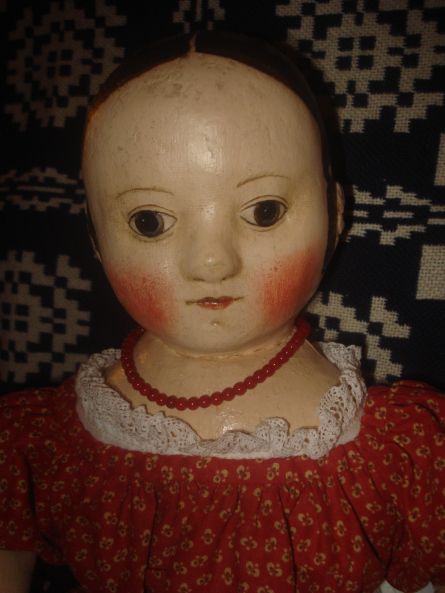
Miss Ruby is my reproduction Izannah Walker doll
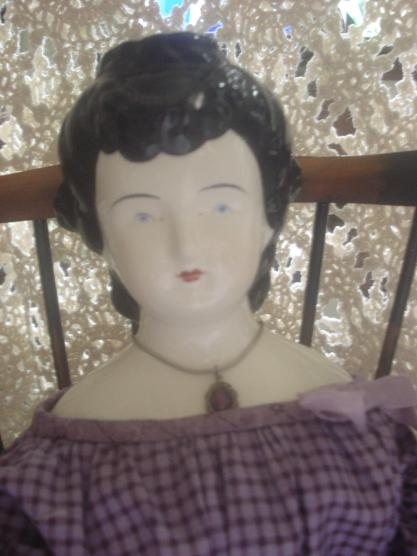
Cordelia, a reproduction china doll, has pleasant face painting, but it is not the same as an antique German china doll. Also, the glaze on her porcelain causes the crisp lines of the detailed braids to be lost. She is not signed by the artist.
Another reproduction doll in my collection is my first china doll, Cordelia. She was most likely molded from a Parian doll, a porcelain doll that was not glazed, but made from white bisque. This hairstyle was also reproduced by Emma Clear and named “Toinette.” I have not yet found an antique doll with braids like Cordelia to add to my collection.

This antique Parian doll has the same hairstyle as Cordelia, but with added flowers in the loop of the braid. She also has molded lace around her shoulders and glass eyes. Her braids are crisp with individual brush strokes in the hair. She is much more exquisite, and better artistically rendered than Cordelia.
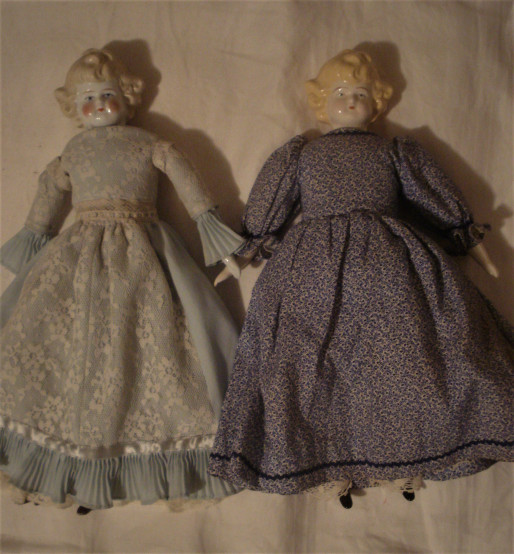
An antique Hertwig “Curl on Top” china doll is shown next to a reproduction of the same doll.
The Hertwig “Curl on Top” china doll is uncommon, but not rare. I purchased the reproduction of this doll, on the right above, while waiting to find an antique one to add to my collection. I was not happy with the reproduction. In comparison, the porcelain quality is inferior, the hair color is a bit garish and lacks crispness, and the face painting has no depth. I am happy to have found my antique Hertwig doll. Notice that the reproduction shoulder-head is slightly smaller than the original. This shrinkage occurs when a mold is made of an existing head. The new head is molded from the antique and shrinks when fired in the kiln.
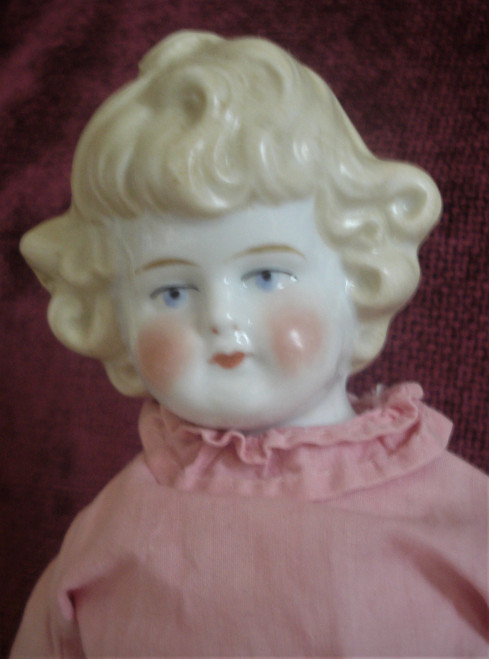
The face painting on this 13″ Hertwig doll is typical for this manufacturer, circa 1900. The hair is nicely molded with brush strokes.
Another doll on my wish list is an 1840’s Lydia china doll. Unfortunately for me, this antique doll is quite rare, and well out of my price range when she is to be found. I have, however, seen a few good reproductions of this doll, and I was fortunate enough to have added one to my collection.

An antique china doll with Lydia hairstyle circa 1840. The face painting on this doll indicates that she was made by the A. W. Kister Porcelain Factory. Note her pink tint with whites of eyes.
The reproduction that I purchased has an appropriate reproduction body with flat soled shoes and spoon hands. Her face painting is well done. She cost me 1% of the $5000 to $6000 that an antique Lydia sells for.
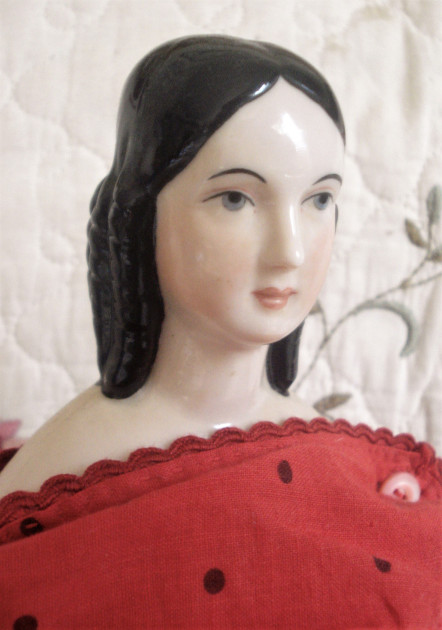
This is the reproduction Lydia, marked “Rossi” on the back of her shoulder-plate. She may have been molded from a doll like the one above. Her coloring is not as high as the antique doll pictured above, and her lips are painted differently, yet her painting is good. As with the antique Lydia, she has a pale pink tint and the whites of her eyes remain white.
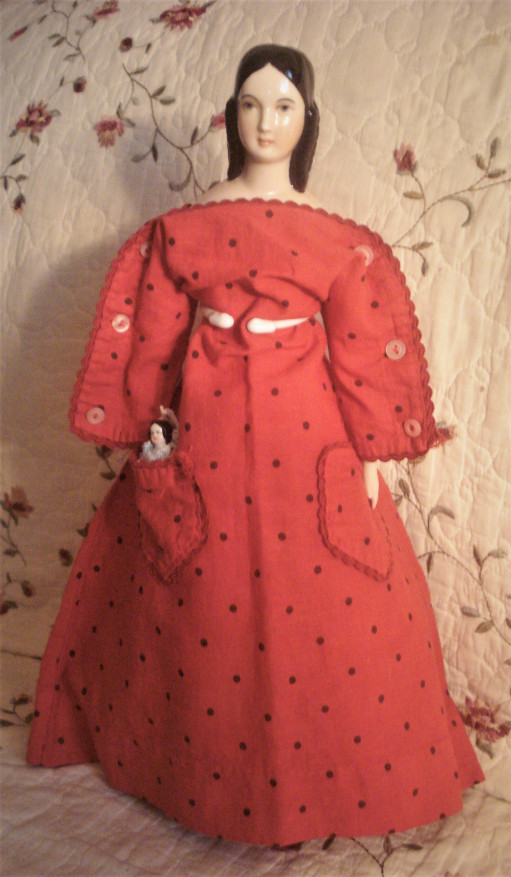
The little doll in the pocket of the antique dress is an antique “baderkinder” or Frozen Charlotte with a Lydia hairstyle.
“Curly Top” is another uncommon, though not rare, china doll that is often found reproduced. This one with black hair is marked “P S” on the back of her shoulder-plate.
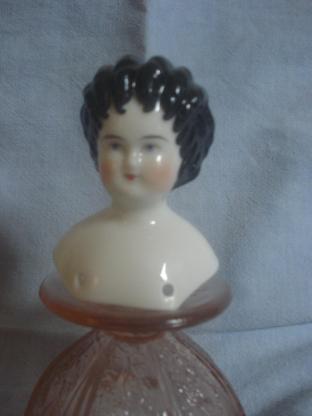
The painting on this 3″ reproduction Curly Top is well done, but not quite like the originals. Again, the hair is not crisp through the thicker applied glaze. Some antique Curly Top dolls have delicate wisps of hair painted at the tips of the curls.

This circa 1880 antique Curly Top in my collection, with Cafe Au Lait hair, is larger than the reproduction above, with a shoulder-head that measures 5 3/4″. She is beautifully painted in the style of Alt Beck & Gottschalck dolls. The accent line painted between her lips has a very slight V dip in the middle which gives her an introspective smile.
Almost all of the newer china doll copies are reproductions; however, there is one that is a re-issue of an antique doll made by the original company. This is the Royal Copenhagen porcelain doll with a brown bun that was originally made in the 1840’s. Royal Copenhagen re-issued this porcelain shoulder-head from their molds beginning in 1977 with production lasting into the 1980’s. This doll (along with a larger lady and a boy doll) is well made and artistically rendered from the original company. It is difficult to tell the difference from the original antique doll. She is a work of art, beautifully sculpted with her long lady’s neck, mature face, pale pink tint, and face painting details.
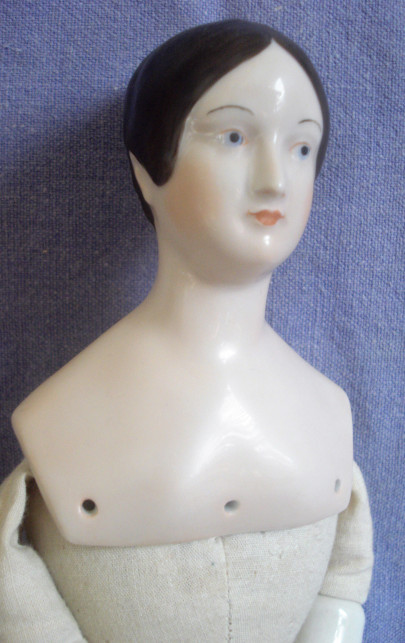
The smaller re-issue Royal Copenhagen Bun Lady doll in my collection is also known as “Amalie” by collectors.
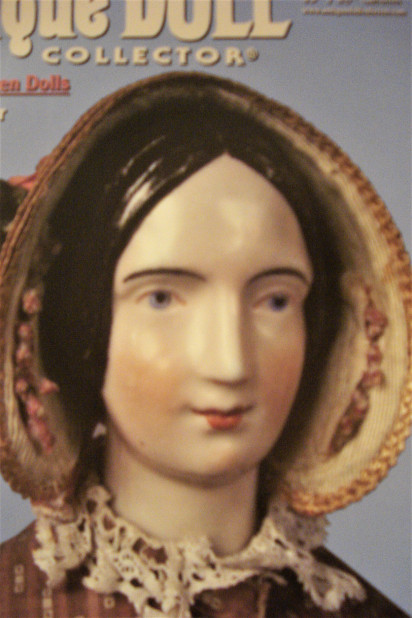
This antique 1840’s Royal Copenhagen doll, from the collection of Kirsten Johansen, was featured on the May 2015 cover of Antique Doll Collector magazine for their article on Royal Copenhagen Dolls.

“Denmark” and the Royal Copenhagen waived blue lines are clearly visible on the back of the shoulder-plate of the re-issue doll in my collection.

I recently found an appropriate body for this doll with low heeled shoes and lady-like hands, but she has no clothing yet.
With much of what we consider as art at its’ finest, we must visit a museum to see it in all of its’ splendor. It is the rare and wealthy collector who can hope to own a Degas sculpture or a Carl Larsson painting. We may decide to bring home a small reproduction of a favorite sculpture, or a print of a painting we admire. Likewise, some of the most lovely antique dolls are so rare that bringing one into our personal collection is just not possible. Of course an oil painting will be much higher quality than a print of that painting. And so an original antique doll will be superior to a reproduction. With this maxim in mind, it is best to bring the antique doll into a collection whenever possible. Yet a good quality reproduction of an antique doll can bring the art of the doll recapitulated into our space, and bring joy to our collection when the original doll is out of reach.
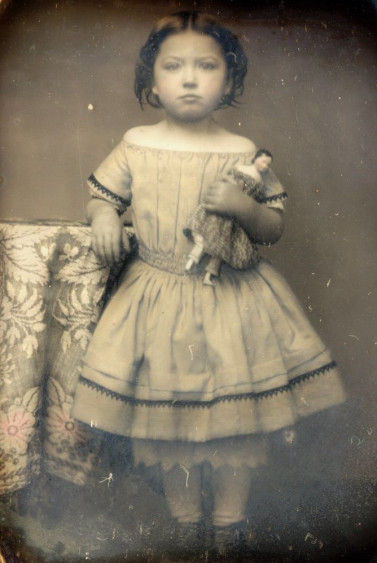
Antique photo of girl holding a Covered Wagon style china doll
May you surround yourself with art that speaks to your heart and soul.
Advertisements Share this:
